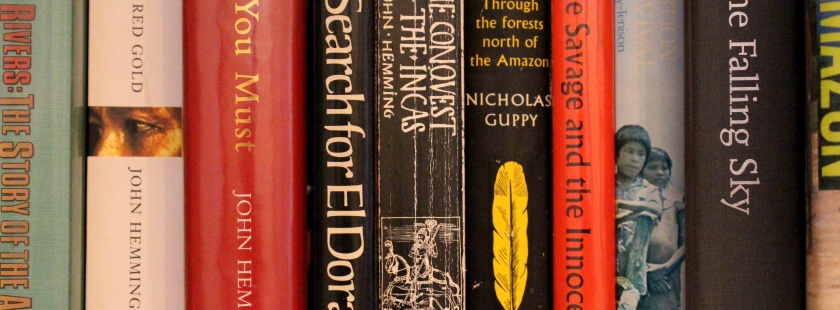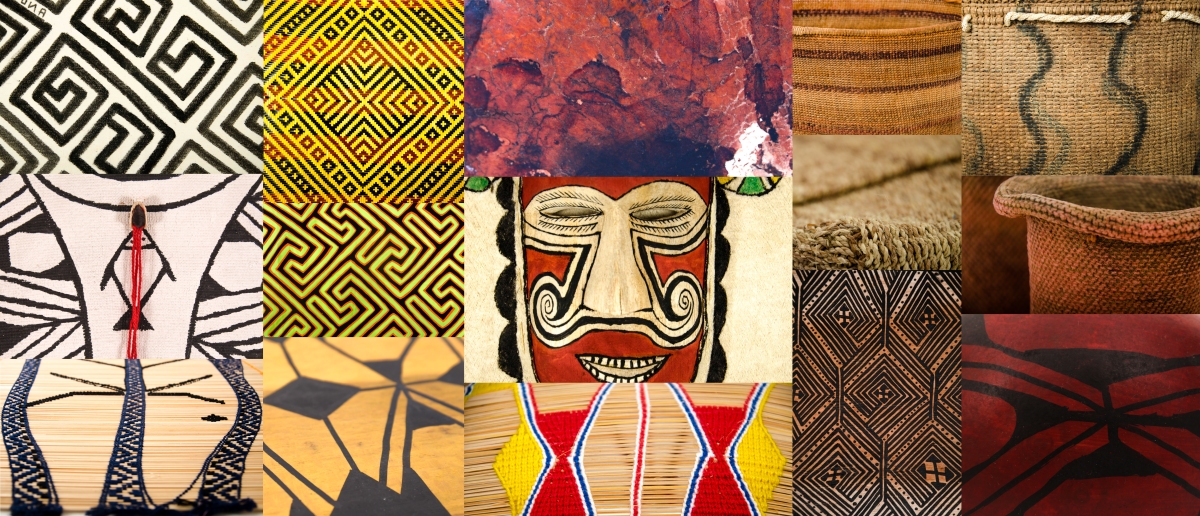– Adam Mekler
As this is only our 2nd blog post we would like to give an overview on Amazonian indigenous art before we explore specific details and collections in future posts. The ancient and complex artistic style of Amazonian peoples has largely gone unnoticed and it is time for change. There are few collections of Amazonian artefacts in museums and galleries across the world with sparing printed documentation available either. In general, very little has been recorded and the rest is largely inaccessible, this could be because the items do not survive the humid conditions of the jungle but also due to the lack of interest and appreciation from the outside.
One of the main purposes of Xapiri is to give this indigenous art a wider platform for which it can be accessed, appreciated, elevated and understood. In an age where much of our western society is dependent on poor quality and mass produced factory made goods we can certainly acknowledge and learn a great deal from the incredibly skilled artisans of the Amazon region.
In addition to the pleasing aesthetics, most items also carry an anthropologic significance and individual meaning. There are of course many similarities between the artistic output of the different tribes but it is also clear that each ethnicity has their own identity when it comes to their work. Between themselves, the different groups are often acclaimed for a particular skill, for example the Wauja people of the Xingu region in Brazil are renown for the exceptional quality of their ceramics and traditionally tribes would travel to neighbouring groups to exchange their own specialty for the other.
The indigenous people have ‘art’ in their blood and it is so inherent that most tribal languages do not have a direct translation for the word. The artistic outputs are seen throughout village life; from body painting, body ornaments, beaded / seeded jewellery, basketry, ceramics, carvings, masks and much more.
An example of how the indigenous people immediately think of artistic creation is with the arrival of the glass beads they are now so well known for. From early contact with European conquistadors, these beads have been used to firstly encourage a safe initial contact and then to develop positive relationships. As a natural progression from their traditional seeded jewellery the Indians have taken the beads and created incredibly fine designs inspired by nature. These stylisations involving Amazonian flora and fauna often involve powerful geometric patterns which are also seen through their body painting and textiles.
The skills needed to weave, carve, sculpt and paint are ancient and have been passed down with love from generation to generation. Traditionally, the village roles of the master artisans are highly respected but increasingly today, less of the younger generations have the interest to continue their traditions. Often this is because of outside temptations and influences but also due to the fact the art is not valued. It is the aim of Xapiri to help restore this situation by encouraging the communities to continue their work as we develop the appreciation for the art outside of the village, in Brazil and worldwide. One method of increasing this understanding and value will be to document the individual artist when profiling certain creations as the sometimes derogatory term of ‘primitive art’ is labelled to some truly ‘fine art’ objects.
From the many conversations we have had since launching Xapiri with the visitors to our gallery and website, we have been reassured that our opinion is shared and that the incredible art produced is worthy of higher appreciation. By developing this market we will be able to develop a sustainable economic option for the communities doing something they love. By all means, the vision is not to commercialise the items but rather preserve the art forms and give a sustainable structure and fair trade platform for the goods to be produced and sold. It is not in nature for the indigenous people or Xapiri to mass produce / commercialise but rather to focus on quality and authenticity of each and every item.

A Reading suggestion:
This book is an excellent reference for a wide array of indigenous objects both ceremonial and utilitarian, illustrated with over 190 specially commissioned photographs and informational text. Resplendent feather headdresses, exotic bark cloth dance costumes, wild animal effigy and spirit body masks, beautifully painted tunics, extraordinary fire ant ritual shields, striking body ornaments of all kinds, ceramic sculptures, fine basketry and weapons to name a few are all explored! In this book the cultural richness of the Amazon receives not only the sympathetic understanding it deserves, but also the aesthetic appreciation that is so long overdue.
An excerpt from the preface by Peter G. Roe:
For these reasons, the rich and incredibly beautiful, yet evanescent, arts of the Amazonian jungle – neither monumental, static, fixed nor useless – have languished outside of the Western aesthetic consciousness. Adam Milker’s peerless and meticulously documented collection of Amazonian arts will help redress our Eurocentric bias by revealing to us a world of great and threatened beauty. Perhaps we may even be energised to demand its better preservation in countless dank museum sub-basements where so much of it now languishes, as well in the jungle where it is still being created.’
The book covers 7 key areas:
Xapiri


